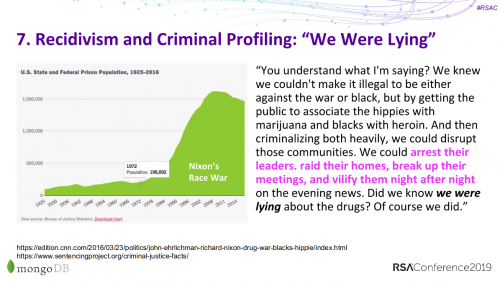A recent study by Simmrin Law Group claiming to identify “states where Americans face the highest risk of false crime accusations” perfectly demonstrates how statistics can be weaponized to punish transparency and reward cover-ups. The analysis gets everything backwards, celebrating states that likely ignore wrongful convictions while demonizing those actually working to fix them.
Statistical Flaws
The study ranks Illinois as the “worst” state because it has 1,050 exonerations per 100,000 prisoners. But this completely misses the point: exonerations don’t create wrongful convictions—they correct them.
States with high exoneration rates aren’t generating more false accusations. They’re finding and fixing the mistakes that every justice system inevitably makes. Meanwhile, South Carolina’s “impressive” rate of just 28 exonerations per 100,000 prisoners likely indicates a broken system that leaves innocent people to rot in prison. Can you guess how “impressive” North Korea’s rate is?
Exoneration Rates Are a Canary
When Illinois leads in exonerations, it demonstrates:
- Robust post-conviction review systems that actually work
- Transparency and accountability in acknowledging mistakes
- Resources dedicated to justice, including active innocence projects
- Legal frameworks that allow prisoners to challenge wrongful convictions
- A justice system willing to do the hard work of correcting errors
Compare this to states, like North Korea or Myanmar, with virtually zero exonerations. Are we really supposed to believe their justice systems never make mistakes? Or is it more likely they lack the mechanisms, resources, or political will to find and fix them?
Crime Statistics as Parallel
This backwards analysis mirrors the flawed thinking around crime statistics. Higher reported crime rates often indicate:
- Communities that trust police enough to report crimes
- Better police response and documentation systems
- Thorough investigation practices
- Transparent record-keeping
Lower crime rates might just mean people have given up calling for help, or that incidents go unreported and undocumented.
The Big Bad Scandal
The scandal isn’t that some states find wrongful convictions—it’s that others apparently don’t even look. They expect corrupt political rewards for burying the truth and incarcerating innocent people.
When external forces intervene in high-crime areas based purely on statistics without understanding the underlying dynamics, they often undermine the very systems working hardest to address problems transparently.
Sending military troops into high crime areas to “help” police is autocratic theatre to undermine local communities and destroy any independence left in sovereign authorities.
Data Should Not Be Tortured
Using the study’s own sources from the National Registry of Exonerations, we should be asking:
- Why do some states have virtually no mechanisms for post-conviction relief?
- What systemic barriers prevent wrongfully convicted people from proving their innocence?
- How many innocent people remain imprisoned in states that rarely exonerate anyone?
Bottom Line
A justice system’s quality shouldn’t be measured by how few mistakes it admits to making, but by how effectively it finds and corrects the mistakes it inevitably does make. States like Illinois, New York, and Massachusetts aren’t failing their citizens—they’re actually serving them by maintaining systems robust enough to catch and fix errors.
The states we should really worry about are those with suspiciously pristine records who apparently never make mistakes worth correcting. Every seasoned auditor knows a book with too few errors is being cooked.
What we see in the study is Illinois has the most integrity and South Carolina has the least integrity. The original study inadvertently revealed to the trained professional eye which states are actually doing the work versus which ones are just sweeping problems under the rug to use mass incarceration as a racist political weapon.

This analysis is based on data from the Simmrin Law Group study using National Registry of Exonerations data:
…analyzed data on total prisoners as of June 2024 alongside exonerations recorded from 1989 to the present. The data was normalized to calculate the number of exonerations per 100,000 incarcerated individuals in each state.
Ironically, Simmrin Law Group’s reported recommendations for stronger public defense, prosecutorial accountability, and rigorous forensic standards all describe exactly what Illinois, New York, and Massachusetts have been doing. The study bizarrely attempts to smear states that follow the study’s own advice.
If you think low exoneration rates are good, you’re celebrating the justice systems of dictatorships. And if you send armed federal troops into “high crime” areas, you’re undermining police by switching to authoritarian approaches to justice.

